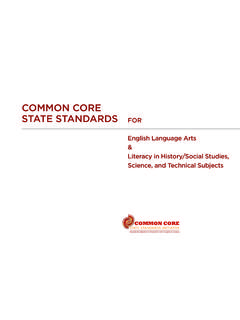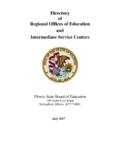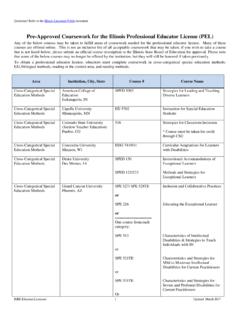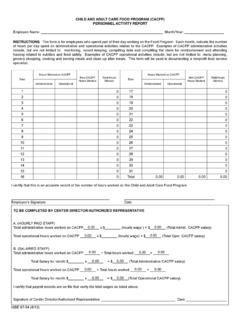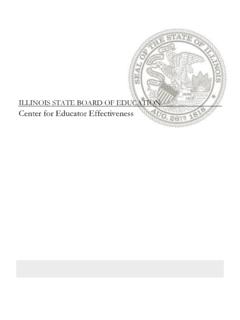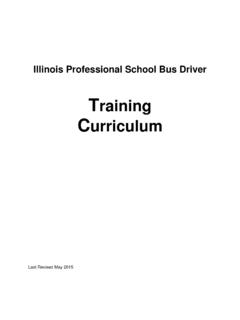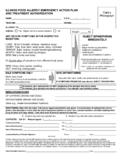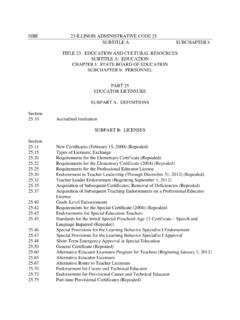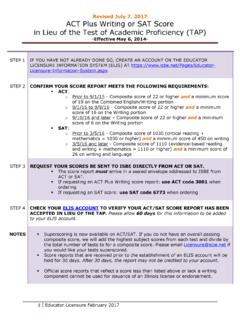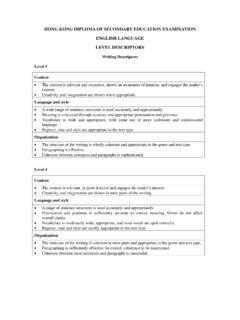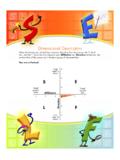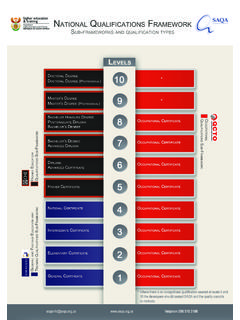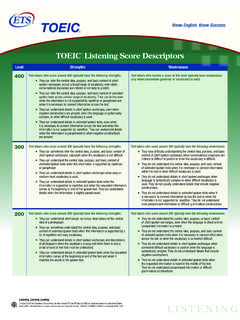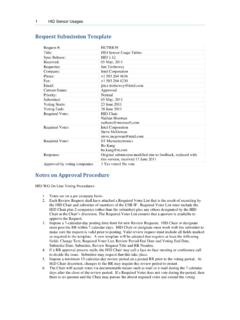Transcription of Performance Descriptors for Social Emotional …
1 Performance Descriptors Social Emotional LEARNING Grades 1-5 Social Emotional Learning Performance Descriptors 1A Identify and manage one s emotions and behavior. Stage A Stage B Stage C 1. Identify emotions ( , happy, surprised, sad, angry, proud, afraid) expressed in feeling faces or photographs. 2. Name the emotions felt by characters in stories. 3. Identify ways to calm yourself. 4. Describe a time you felt the same way a story character felt. 5. Discuss classroom and school rules. 6. Share feelings ( , through speaking, writing, drawing) in a range of contexts. 1. Describe how various situations make you feel. 2. Describe your physical responses to strong emotions. 3. Recognize that feelings change throughout the day. 4. Demonstrate patience in a variety of situations. 5. Demonstrate a range of emotions through facial expressions and body language.
2 6. Practice self talk to calm yourself. 1. Identify a range of emotions you have experienced. 2. Describe situations that trigger various emotions ( , listening to music, talking to a friend, taking a test, being scolded). 3. Recognize mood changes and factors that contribute to them. 4. Depict a range of emotions ( , make a poster, draw a picture, participate in a role play). 5. Distinguish among intensity levels of an emotion. 6. Demonstrate ways to deal with upsetting emotions ( , sadness, anger, disappointment). 7. Practice deep breathing to calm yourself. Grade 1 (A-B) Grade 2 (A-B-C) Grade 3 (B-C-D) Grade 4 (C-D-E) Grade 5 (D-E-F) Social Emotional Learning Performance Descriptors 1A Identify and manage one s emotions and behavior. Stage D Stage E Stage F 1. List positive strategies for handling conflict.
3 2. Explain why characters in stories felt as they did. 3. Distinguish among emotions you might feel in various situations. 4. Use I-statements to express various emotions. 5. Record changes in your emotions throughout the day ( , before and after transitions, recess lunch, etc.). 6. Demonstrate an awareness of how your behavior affects others. 7. Practice different strategies for handling upsetting situations. 1. Describe the physical responses common to a range of emotions. 2. Describe emotions associated with personal experiences. 3. Practice expressing positive feelings about others. 4. Evaluate ways of dealing with upsetting situations ( , being left out, losing, rejection, being teased). 5. Demonstrate emotions in various contexts in role-plays. 6. Practice handling pressure situations ( , taking a test, participating in a competitive activity).
4 1. Identify factors that cause stress both positive and negative. 2. Identify physical reactions to stress ( , increased energy and alertness, increased heart rate and respiration, sweaty palms, red face, etc.). 3. Recognize Emotional reactions to stress. 4. Describe strategies for dealing with upsetting situations ( , disappointment, loss, separation). 5. Reflect on the possible consequences before expressing an emotion. 6. Use I-statements to describe how you feel, why you feel that way, and what you might like to change. 7. Practice strategies to reduce stress ( , talking to a friend or trusted adult, considering what led to these feelings, physical exercise). Grade 1 (A-B) Grade 2 (A-B-C) Grade 3 (B-C-D) Grade 4 (C-D-E) Grade 5 (D-E-F) Social Emotional Learning Performance Descriptors 1B Recognize personal qualities and external supports.
5 Stage A Stage B Stage C 1. Identify things you like to do. 2. Identify the values that help you make good choices. 3. Identify the people who can give you the help you need. 4. Describe things you do well. 5. Identify reliable adults from whom you would seek help in an emergency. 6. Describe situations in which you feel confident. 7. Describe situations in which you feel you need help. 8. Demonstrate a special skill or talent you have. 1. Identify the personal traits of characters in stories. 2. Describe an achievement that makes you feel proud. 3. Identify a community resource you enjoy using ( , play field, park, swimming pool, etc.). 4. Identify various helpers in the school community. 5. Analyze how you might have done better in a situation. 6. Draw a picture of one of your favorite things to do with others ( , play a sport, ride your bike, go to the beach).
6 1. Identify community members that can be of support when needed ( , religious leader, extended family member, and neighbor). 2. Describe the personal qualities that successful learners demonstrate ( , perseverance, responsibility, attention to task, etc.). 3. Explain how practice improves your Performance of a skill. 4. Analyze the positive qualities of role models. 5. Analyze what it is about school that is challenging for you. 6. Draw a picture of an activity your family likes to do together. 7. Demonstrate ways to ask for help when needed. Grade 1 (A-B) Grade 2 (A-B-C) Grade 3 (B-C-D) Grade 4 (C-D-E) Grade 5 (D-E-F) Social Emotional Learning Performance Descriptors 1B Recognize personal qualities and external supports. Stage D Stage E Stage F 1 Identify something you would like to be able to do better.
7 2 Describe ways in which you contribute to the school community. 3 Describe ways in which you help out at home. 4 List ways families can support students in school. 5 Describe how peers can support each other in school. 6 Measure your progress toward a personal goal. 1. Describe a time and situation you needed help. 2. Identify reliable adults from whom you would seek help in various situations. 3. Describe how you would improve your ability to perform a valued skill. 4. Explain how adult role models influence your aspirations for the future. 5. Practice strategies that support peers in school. 6. Demonstrate leadership within the school community ( , reading tutor, student council, clubs, mentoring new students). 1. Name community resources that promote student success. 2. Identify personal strengths and weaknesses and the effect they have on your choices.
8 3. Identify physical and Emotional changes during adolescence. 4. Recognize that students learn differently. 5. Describe how adults at school demonstrate caring and concern for students. 6. Describe how adults at school demonstrate caring and concern for students. 7. Analyze the effort your family or other adults have made to support your success in school. Grade 1 (A-B) Grade 2 (A-B-C) Grade 3 (B-C-D) Grade 4 (C-D-E) Grade 5 (D-E-F) Social Emotional Learning Performance Descriptors 1C Demonstrate skills related to achieving personal and academic goals. Stage A Stage B Stage C 1. Recognize the relationship between what you want to accomplish and setting goals. 2. Explain the various aspects of being successful in school. 3. Describe a behavior you would like to change. 4. Give an example of an academic goal you could set for yourself.
9 5. Give an example of a personal goal you could set for yourself. 6. Divide a goal you have set into manageable steps. 1. Identify a situation you want to change. 2. Identify the progress that you have made toward achieving your goal. 3. Explain the relationship between success in school and becoming what you want to be. 4. Describe how you might improve your classroom behavior ( , raise your hand more often, complete assignments, pay attention). 5. Make a plan for how to improve your Performance in a school subject. 6. Make a plan for how to achieve a personal goal. 7. Use self-talk to reward yourself for accomplishments. 1. Recognize how distractions may interfere with achievement of a goal. 2. Recognize that present goals build on the achievement of past goals. 3. Describe the steps you have made toward achieving a goal.
10 4. Differentiate between short and long term goals. 5. Monitor your progress toward achieving a personal or academic goal. 6. Demonstrate ways to deal with upsetting emotions ( , sadness, anger, disappointment). Grade 1 (A-B) Grade 2 (A-B-C) Grade 3 (B-C-D) Grade 4 (C-D-E) Grade 5 (D-E-F) Social Emotional Learning Performance Descriptors 1C Demonstrate skills related to achieving personal and academic goals. Stage D Stage E Stage F 1. Identify how obstacles have been overcome in achieving a goal ( , examples from literature, Social science, personal experience). 2. Recognize how conditions and people have contributed to your achievement of a goal. 3. Identify the steps needed to perform a routine task ( , homework completion, organization of personal space/materials, studying for a test). 4. Identify factors you could not change that prevented you from achieving a recent goal.
